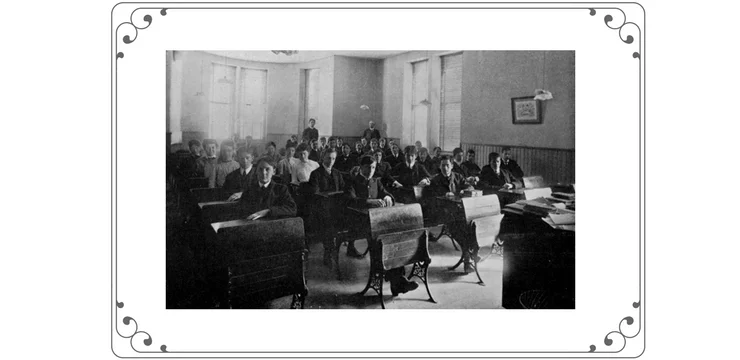The idea of training and development is nothing new to the twenty-first century. Having evolved substantially since over time, it has been refined into the sophisticated process that it is today.
For the history lovers in the audience, we have dipped into the archives and recapped the trends of employee training over the years. This “CliffsNotes” timeline is not only educational, but illustrates the problems with various methods and points to the best practices going forward.
Dramatically improve your training techniques with WalkMe’s personalized guidance.
Classroom Training: The Early Years

While techniques such as simple training on the job and apprenticeships were employed in antiquity, the Industrial Revolution marks the beginning of the modern employee training. For the first time, employers were faced with large numbers of untrained workers and were forced to think about training employees strategically.
Driven by the rise of factories, which were dependent on human workers to operate complex machinery, classroom training was born. Factories needed employees trained quickly and cost efficiently in order to keep up the large demand for produced goods.
The drawbacks of classroom training then is largely the same as it is today — since workers were learning how to do their jobs out of context, they had to remember what they were taught in the classroom until they were back in the production line. Additionally, due to the nature of classroom learning, their training was abstract and theoretical. This forced employees to translate what they had learned into practical action, adding to the cognitive load.
Despite the considerable administrative support, classroom learning still makes the occasional debut in the modern workplace. However, it is generally recognized as less efficient than a hands-on approach.
Individualized Instruction in the Office

Individualized instruction typically exchanges the teacher for self-study materials, thus cutting costs and increasing scalability.
This method relies on programmed materials, or, job training that has been divided into easily digestible steps. Upon completion of each step, an active response is required such as a small quiz, drawing a graph, or solving a problem. Immediate feedback is given after each response.
Still, individualized instruction is not without expense. It requires skilled people to prepare the subject matter in accordance with the job and supervise the process. Finally, like classroom training, it is usually off-task and out of context of the actual job.
Early Machine-Based Learning

While the first computer training didn’t roll out until 1960, the tech was used for teaching purposes as early as 1924 with the first “testing machine.”
A few decades later, in 1954, a Harvard Professor came up with the “teaching machine.” This crude technology enabled schools, for the first time, to administer programmed instruction to their students without a present teacher.
The device worked by viewing questions through a small window, after which the learner could test themselves. Correct answers were rewarded.
eLearning Tools for Employee Training

As computers became ubiquitous during the late 80s and early 90s, computer-based training (CBT) was the natural next step. An eLearning method augments individualized instruction with digital tools, capitalizing on technology’s speed, branching capability and visual display.
Webinars became the new classroom training, using video style lectures which can be viewed by employees from the comfort of their desks. Unfortunately, videos hierarchy, while excellent for initial training, pose difficulty for an individual hoping to brush up on material or searching for a specific term.
Using the cloud to store knowledge, allows the employer to supplement webinars with accessible, on-demand information. Agility is an advantage here as this allows organizations to update and maintain information easily.
Digital Adoption Platform (DAP)

In the age of digital transformation, organizations today face the challenge of software training. Much like the disruption caused by factories during the Industrial Revolution, the rapid influx of today’s digital tools requires companies to once again rethink training methods and techniques.
The key to the future of employee training tools is context, eliminating the gap between theoretical training and practical use. By offering a hands-on approach to learning workplace tools, companies can cut training time and budget.
WalkMe’s Digital Adoption Platform uses contextual step-by-step guidance to train employees on any software system — from simple to advanced. Similar to how GPS leads the driver to their destination, WalkMe instructs users in real-time to achieve objectives while sharpening their digital skills.
WalkMe’s digital guidance cuts training time and costs. Try it today for free.

